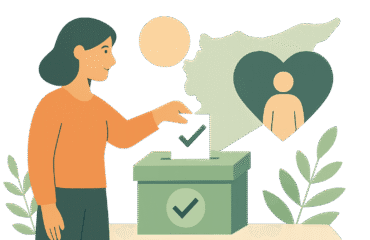
Data Storytelling: How to Use Visualizations to Drive Change in Your Organization
- Data storytelling is an effective tool for transforming data into impactful narratives.
- Visualizations help in understanding complex information quickly and clearly.
- Creating an effective data story requires careful planning and audience understanding.
- Visual data aids in faster and more effective decision-making.
- Overcoming challenges requires investment in training and ensuring data quality.
Table of Contents
- Understanding the Power of Data Storytelling
- Why Visualizations Are the Key to Success
- Essential Steps for Using Visualizations in Data Storytelling
- Practical Examples from Insight Syria
- Challenges and How to Overcome Them
- Conclusion: Building a Data-Driven Future
Understanding the Power of Data Storytelling
Stories have always been an integral part of the human experience, helping us understand the world around us, connect with others, and remember information. In the context of business and policy, data storytelling offers a logical and compelling narrative grounded in factual evidence. It goes beyond merely presenting numbers; it places those numbers within their context, reveals hidden relationships, highlights important trends, and ultimately leads to actionable insights.
At Insight Syria, we see daily how data, when told correctly, can open new horizons for understanding and change. Whether the data relates to market trends, public opinion on a specific political issue, or the effectiveness of a social program, the ability to transform this data into a persuasive story is key to making an impact.
Why Visualizations Are the Key to Success
Visualizations are a universal language for data. While numbers and tables can be difficult for a non-specialist reader to grasp, graphs, charts, maps, and other illustrations can quickly and clearly show patterns and trends. They help to:
- Simplify Complex Information: A single visualization can summarize hours of data analysis or pages of reports. For example, a line chart showing growth trends over a period is much easier to understand than a table full of monthly data.
- Identify Patterns and Trends: Visualizations help in discovering relationships and trends that might not be apparent in raw data.
- Enhance Memory and Information Retention: The human brain tends to remember visual information better.
- Evoke Emotions and Motivate Action: Carefully designed visualizations can elicit emotional responses.
- Facilitate Decision-Making: When decision-makers can understand data quickly and easily, they can make informed decisions faster and more effectively.
Essential Steps for Using Visualizations in Data Storytelling
Building an effective data story using visualizations requires careful planning and thoughtful execution. At Insight Syria, we follow a systematic approach to ensure maximum benefit from the data. Here are some essential steps:
1. Understand the Goal and Audience
Before you start creating any visualization, you must ask yourself:
- What is the main message I want to convey?
- Who is my target audience?
- What action do I want my audience to take after seeing the story?
2. Collect and Clean Relevant Data
Data quality is the foundation of any successful data story.
3. Choose the Right Type of Visualization
- Bar Charts
- Line Charts
- Pie Charts
- Scatter Plots
- Maps
- Area Charts
4. Design Clear and Engaging Visualizations
Good design is not just about aesthetics; it’s about clarity and effectiveness in conveying the message.
5. Build the Narrative Around the Visualizations
A visualization is a tool, but the story is what brings the data to life.
6. Iterate and Refine
Creating an effective data story is an iterative process.
Practical Examples from Insight Syria
At Insight Syria, we apply these principles in our daily projects.
Challenges and How to Overcome Them
Organizations may face some challenges when adopting data storytelling and visualizations:
- Skill Gaps: Not all employees may have the necessary skills to create effective visualizations or analyze data.
- Data Quality: As mentioned, bad data leads to bad data stories.
- Resistance to Change: Some employees or leaders might resist new methods.
- Access to the Right Tools: Visualization tools can be complex or costly.
Conclusion: Building a Data-Driven Future
In conclusion, data storytelling using effective visualizations is a crucial strategy for organizations seeking to drive change and achieve success in the evolving Syrian context.
Frequently Asked Questions
What is data storytelling?
Data storytelling is the process of transforming data into clear and impactful stories to facilitate understanding and communication of information.
How can I use visualizations?
You can use visualizations to simplify complex information, identify patterns, and drive decision-making.
What are the potential challenges?
Challenges include skill gaps, data quality issues, and resistance to change.



